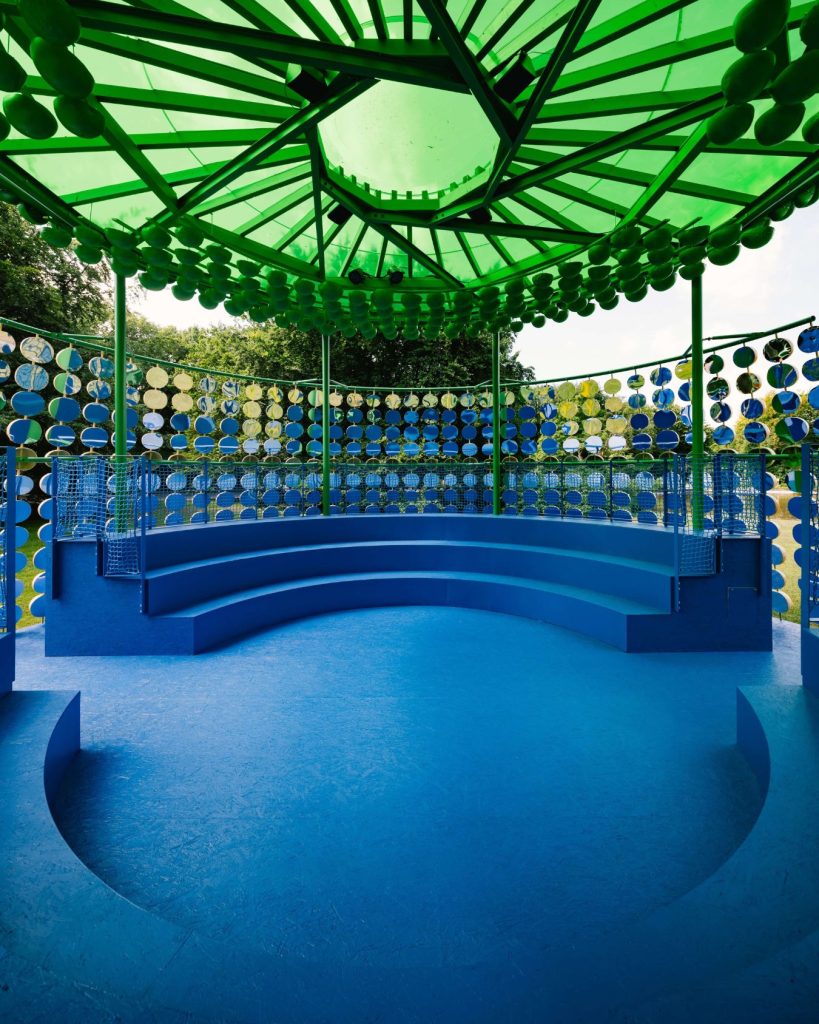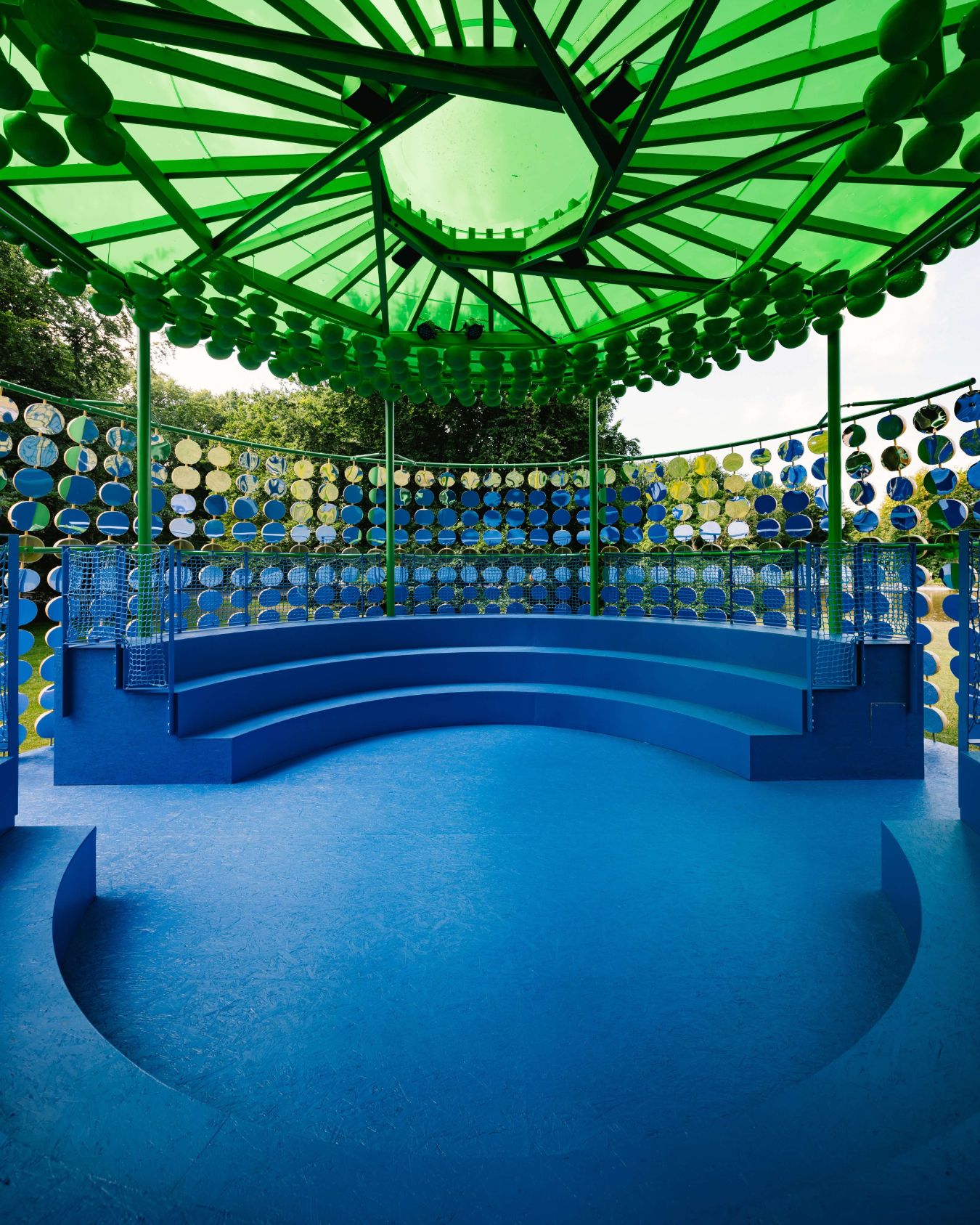
Exhibition at Children’s Museum Explores Decolonization Through Color

**Expanding the Spectrum: Rethinking Color through “All That Remains” at Sugar Hill Children’s Museum**
When someone asks, *“What is color?”* the typical answer gestures toward subjectivity, suggesting that color is a personal, emotional experience. Yet, traditional Western color theory often remains rooted in old, exclusionary narratives. In a refreshing counterpoint, the group exhibition *All That Remains* at the Sugar Hill Children’s Museum of Art and Storytelling in Manhattan challenges those stale paradigms. Curated by C.J. Chueca and Omar López-Chahoud, the show invites audiences to explore new ways of experiencing color — many drawn from non-Western, Indigenous, and decolonial perspectives.
At the heart of *All That Remains* is an exploration of how contemporary artists use color not simply as an aesthetic choice but as a portal to identity, memory, land, and resistance.
### Blue: Beyond Melancholy and Spirituality
The color blue receives special attention through the works of Amanda Martínez, Yiyo Tirado, and Liz Deschenes. Rather than replicating the haunting sorrow of Picasso’s Blue Period or the divine transcendence of Renaissance frescoes, these artists broaden blue’s conceptual range.
– **Amanda Martínez** honors Indigenous traditions in her sculptural piece “Working Meditation 1. (Rio Grande)” (2023). Echoing the Rio Grande weaving methods, Martínez layers light blue stripes to resemble the movement of water, forging a connection to the land and the Indigenous concept of *querencia* — a heartfelt sense of home.
– **Yiyo Tirado’s** “Real Estate” (2025) critically reclaims blue tones corporatized by companies like Microsoft and Visa. His monochromatic LED screens mimic real estate advertising displays, highlighting how Indigenous airspace and land in Puerto Rico and the Caribbean have become commodities under speculative capitalism.
– **Liz Deschenes**, through her dye sublimation print “Indicator #6” (2022), traces a blue gleam lifted from humidity control swatches hidden behind museum artworks. On aluminum, the color embodies a subtle, almost intangible brilliance that demands close attention from the viewer.
Each artist demonstrates how the color blue, often flattened into a soulless corporate logo, can reclaim its spiritual and cultural depth.
### Photography’s Special Language of Light and Color
Unlike traditional painting, photography enables a precise and ephemeral capture of color. Two artists extend this potential:
– **Lucia Koch** creates immersive, almost otherworldly spaces inside everyday objects. In her work “Polenta” (2025), she frames light filtering through a cardboard box’s cut-out window, highlighting nature’s dance with shadow and illumination.
– **Leslie Hewitt’s** “Subfield (Extension) (Tension)” (2024) uses chromogenic prints arranged geometrically to interrogate how color perception shifts in relation to adjacent hues, challenging the viewer to reconsider color as relational, not static.
These works underscore a critical realization: by embracing light’s nuances, contemporary photography uncovers dimensions of color inaccessible through traditional media.
### Vibrancy as Resistance: Kevin Umaña’s Kaleidoscopic Tributes
While much of *All That Remains* embraces limited or monochromatic palettes, **Kevin Umaña’s** dynamic compositions venture into vibrant, visceral territories. His mixed-media “visual puzzles” honor the Pipil people of El Salvador, survivors of a tragic genocide in the 1930s. Umaña’s color zigzags recall traditional Pipil motifs symbolizing rivers and snakes while also confronting the complexity of historical trauma. Each bold patch of color suggests layers of resilience, memory, and reconstruction.
### Decolonizing the Narrative of Color
Ultimately, *All That Remains* invites viewers to see color through new lenses — Indigenous, diasporic, and non-Western viewpoints that resist reduction to Eurocentric frameworks. It also hints at how corporate capitalism has sanitized and commodified colors once deeply embedded in spiritual and relational contexts.
Artists in the exhibition reveal that color is still ripe for exploration: as identity, history, political critique, and, importantly, as a living language for storytelling.
### Why It Matters
In a world increasingly mediated by commercialized images and entrenched stereotypes, exhibitions like *All That Remains* are vital. They don’t just showcase artistry; they interrogate dominant visual languages and propose alternate, richer ways of seeing. Far from being a closed tradition, the spectrum is still open — ready for new stories, new connections, and new visions.
—
*All That Remains* continues at the Sugar Hill Children’s Museum of Art & Storytelling (898 St. Nicholas Avenue, Manhattan) through May 25, 2025. Curated by C.J. Chueca and Omar López-Chahoud, it’s a must-visit for anyone longing to rethink what color — and art itself — can be.
—
*If you enjoyed learning